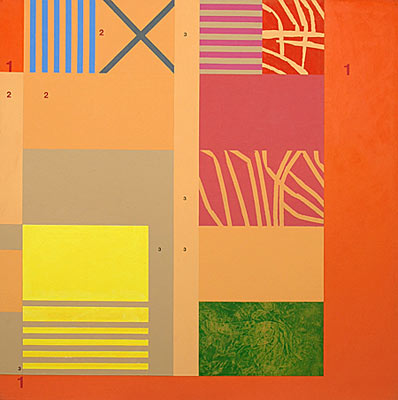Hassel Smith: One of America’s First Abstract Expressionists at Sullivan Goss
Show Runs Through May 31
The idea that the painting is an art object rather than a representation was for many artists the core principle of abstract expressionism. Hassel Smith, an important international abstract expressionist who came of age in San Francisco, is no exception. His cheerful motto that his “paintings are intended to be additions to rather than reflections of or upon life” is evident in the freedom with which he shifted between different modes, equally at home in techniques as disparate as those of Willem de Kooning and Piet Mondrian.

Smith had the good fortune to teach art at exciting times and in stimulating places. The works included in this exhibit reflect his tenure in England and Wales in the 1970s as well as his roots in the Bay Area and Sonoma County. In a time when neo-expressionism was the new rage, Smith persevered in his pursuit of the “anxious object.” As a result, Smith’s paintings from the late 1970s and 1980s are among the most memorable and representative such works of the era.
In fact, anyone who remembers the new music coming out of England in the late ’70s-not only The Clash, but also more experimental groups like Wire and Gang of Four-may feel the deep rumblings of the visual equivalent of dub when looking at a painting like “A-1231” from 1979. The loose improvisations on the grid; the bold colors rendered in terms borrowed from utilitarian graphics like maps and signs; the tart, slightly skewed palette; and those little numbers, each demanding the attention only to render its focus more random-all the tricks one associates with such influential British graphic designers of the 1970s as Jamie Reid here come bubbling out like so much California wine. It’s as though Smith were an American painter from San Francisco who suddenly tuned in to British pirate radio.
All the work from 1979 is, as they say in Bristol, brilliant. For instance, in a perhaps less easily dated way, “4 Colours, 3 Squares and 2 Arches” is very nearly as good as “A-1231.” On the opposite wall, one sees the next episode in Smith’s development, a brushier approach that yields only marginally less interesting results.



